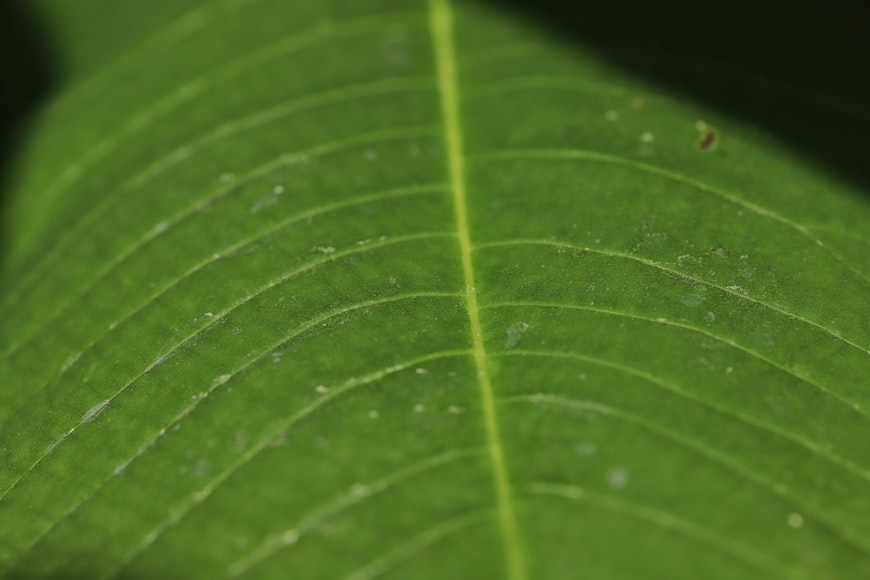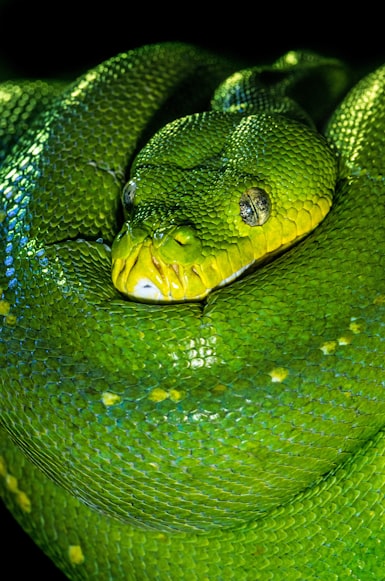Green Tree Python Snake Outline

Introduction
The Green Tree Python Snake (Morelia viridis) is a captivating reptile that inhabits the tropical rainforests of Australia and New Guinea. Renowned for its vibrant emerald hues and arboreal lifestyle, this magnificent creature has captured the hearts of snake enthusiasts worldwide.
Unique Characteristics
- Striking Coloration: As their name suggests, Green Tree Pythons boast a stunning shade of bright green, ranging from emerald to lime. This coloration provides excellent camouflage amidst the verdant foliage of their rainforest home.
- Arboreal Adaptations: Green Tree Pythons have evolved to excel in their arboreal (tree-dwelling) environment. They possess prehensile tails and muscular bodies that allow them to navigate branches and leap between trees with ease.
- Nocturnal Behavior: These snakes are primarily nocturnal, emerging from their hiding places after sunset to search for prey. Their keen vision and heat-sensing capabilities enable them to detect prey in the darkness.
Habitat and Distribution
Green Tree Pythons reside in the tropical rainforests of Queensland, Australia, and Papua New Guinea. They prefer humid environments with ample vegetation and easy access to water bodies. These snakes can be found at various elevations, from sea level to over 2,000 meters.
Behavior and Diet
Green Tree Pythons are relatively non-aggressive towards humans. However, they will defend themselves if threatened and may bite if provoked. Their diet consists primarily of small mammals, birds, and reptiles. They are known to ambush their prey by waiting in trees and launching themselves when it approaches.
Captivity
Due to their striking appearance and relatively docile nature, Green Tree Pythons are popular pets. However, they require specialized care to thrive in captivity. Providing a large, naturalistic terrarium with ample branches and hiding places is crucial. Maintaining appropriate humidity, temperature, and lighting is also essential for their well-being.
Conservation Status
Green Tree Pythons are listed as Least Concern by the International Union for Conservation of Nature (IUCN). However, habitat loss and poaching for the pet trade pose potential threats to their populations. Conservation efforts are underway to protect this magnificent species and its rainforest ecosystem.
Conclusion
The Green Tree Python Snake is a captivating creature that embodies the beauty and mystery of the rainforest. Its vibrant coloration, arboreal adaptations, and nocturnal behavior make it an enduringly popular pet. By understanding their unique characteristics and providing proper care, we can help ensure the prosperity of these enchanting reptiles in the wild and in captivity.
Introduction:

Introduction
Green tree pythons (GTPs), scientific name Morelia viridis, are non-venomous snakes that captivate enthusiasts with their vibrant coloration and graceful arboreal nature. Native to the tropical rainforests of Indonesia and New Guinea, these serpents play an integral role in their ecosystem and hold a special place in human culture.
Physical Characteristics
GTPs are medium-sized pythons, typically reaching lengths of 5-8 feet. They possess a slender, muscular body with a prehensile tail that allows them to grip tree branches securely. Their vivid green scales, adorned with intricate patterns, provide excellent camouflage amidst the lush foliage of their rainforest habitat.
Behavior and Diet
Green tree pythons are nocturnal and spend most of their time perched high in the trees. They are ambush predators that lie in wait for unsuspecting prey, such as small mammals, birds, and lizards. GTPs possess excellent eyesight and heat-sensing capabilities, enabling them to detect potential prey from a distance.
Habitat and Distribution
GTPs are found exclusively in the rainforests of the Papua and Maluku Islands of Indonesia, as well as the northern regions of Australia. Their preferred habitat consists of dense vegetation, ample water sources, and numerous hiding places.
Conservation Status
Green tree pythons are currently classified as a vulnerable species by the International Union for Conservation of Nature (IUCN). Habitat loss, illegal trade, and overhunting pose significant threats to their populations. Conservation efforts are ongoing to protect these captivating creatures and ensure their long-term survival.
Captive Care
GTPs can thrive in captivity with proper care. They require large, vertically oriented enclosures that mimic their natural arboreal environment. Adequate ventilation, temperature gradients, and access to freshwater are essential. A varied diet of appropriately sized prey should be provided.
Conclusion
Green tree pythons are fascinating and beautiful reptiles that embody the wonders of nature. As we continue to learn about these captivating creatures, we must strive to protect their rainforest habitats and ensure their survival for generations to come. Whether you’re a seasoned herpetologist or an aspiring reptile enthusiast, the allure of the green tree python is undeniable.
Physical Characteristics:

As a proud Green Tree Python Snake pet blogger, I am thrilled to delve into the fascinating physical characteristics of this captivating species. These arboreal gems, native to the rainforests of New Guinea and Australia, possess an array of unique features that make them stand out in the world of snakes.
Size and Weight:
Adult Green Tree Pythons are relatively large snakes, with females typically reaching lengths of 5-8 feet and males being slightly smaller at 3-6 feet. Their weight ranges from 5 to 15 pounds, with females being heavier than males.
Coloration:
These snakes are renowned for their vibrant and distinctive coloration. The dorsal (top) side of their bodies is usually a striking emerald green, providing them with excellent camouflage amidst the lush tropical foliage. The ventral (underside) side is typically a light yellow or cream color.
Distinctive Patterns:
In addition to their bold green coloration, Green Tree Pythons exhibit a series of distinctive patterns that enhance their beauty. These patterns include:
-
Reticulated Scale Pattern: The scales on their bodies are arranged in a distinctive reticulated pattern, giving the snake a unique texture and appearance.
-
White or Yellow Stripes: Running along the sides of their bodies are a series of white or yellow stripes, which are often broken into small dots or dashes as they reach the tail. These stripes provide contrast and definition to the snake’s overall coloration.
-
Chevron Markings: The juvenile snakes exhibit prominent V-shaped chevron markings on their dorsal side. As they mature, these markings become more subdued or may disappear altogether.
-
Head Markings: Green Tree Pythons have large triangular heads with dark markings around the eyes and snout. These markings serve as camouflage and help the snake blend into its surroundings.
Other Physical Characteristics:
Beyond their size, coloration, and patterns, Green Tree Pythons possess several other notable physical characteristics:
-
Prehensile Tail: These snakes have a long, prehensile tail that they use to anchor themselves to branches and other objects while climbing and moving among the trees.
-
Heat-Sensitive Pits: Located on both sides of the snake’s head are heat-sensitive pits. These pits allow the snake to detect prey and navigate its surroundings by sensing changes in temperature.
-
Fangs and Venom: Green Tree Pythons are non-venomous snakes, but they do possess small, rear-oriented fangs. They use these fangs to grip and hold prey, but they are not used to inject venom.
Conclusion:
The Green Tree Python Snake is a captivating species known for its striking physical characteristics. Their vibrant green coloration, distinctive patterns, and unique adaptations make them a true wonder of the rainforest. Understanding and appreciating these physical traits provides us with a deeper connection to these enigmatic creatures and enhances our ability to care for them as responsible pet owners.
Habitat and Distribution:

The Green Tree Python (Morelia viridis) is a stunning arboreal snake species native to the rainforests of New Guinea, Indonesia, and Australia. These snakes are known for their vibrant emerald green coloration and their ability to camouflage themselves amidst the lush vegetation.
Habitat:
Green Tree Pythons primarily inhabit tropical and subtropical rainforests. They prefer to dwell in dense vegetation, such as tall trees, where they can find ample shelter and prey. These snakes are adept climbers and spend most of their time elevated above the forest floor.
They often seek out tree hollows, crevices, or abandoned bird nests for shelter. These structures provide protection from predators, extreme weather conditions, and desiccation.
Distribution:
Green Tree Pythons have a relatively wide distribution within their native range. They are mainly found in:
- New Guinea: Throughout the island, particularly in the lowlands and mid-altitude rainforests.
- Indonesia: On the islands of Halmahera, Bacan, Obi, and Timor.
- Australia: In the tropical rainforests of the Cape York Peninsula and the Wet Tropics region of Queensland.
Geographic Variation:
Green Tree Pythons exhibit geographic variation in their coloration and size. Snakes from different regions may have slightly different shades of green, varying from olive to bright emerald.
Additionally, Green Tree Pythons from Australia tend to be smaller in size compared to their counterparts from New Guinea and Indonesia. This variation is attributed to differences in prey availability and environmental conditions.
Behavior and Temperament:

As nocturnal and arboreal creatures, Green Tree Pythons (Morelia viridis) spend the majority of their time perched high in trees. Their emerald-green coloration provides camouflage among the foliage.
Defensive Methods:
When threatened, Green Tree Pythons typically exhibit defensive behaviors:
- Hissing: They emit a loud hissing sound to deter potential predators.
- Coiling: They coil their body tightly, exposing their head and neck as a warning.
- Strike: If the threat persists, they may strike with their sharp teeth. However, their venom is not potent enough to pose a significant danger to humans.
Temperament:
Green Tree Pythons have a generally docile temperament when handled by experienced owners. However, they can become defensive if they feel threatened or stressed. Here are some key characteristics of their temperament:
- Solitary: They are solitary creatures that prefer to be alone and are not typically aggressive toward their own species.
- Nocturnal: Being nocturnal, they are most active at night and may be less responsive during the day.
- Arboreal: They prefer to climb and perch in branches, so they require enclosures with ample vertical space.
- Fearful: They can be easily startled by loud noises or sudden movements, which may trigger a defensive response.
- Defensive: While they are not typically aggressive, they may bite if they feel threatened.
Handling:
When handling Green Tree Pythons, it is essential to approach them calmly and gently. Support their body at all times and avoid making sudden movements. They should only be handled for short periods to minimize stress.
Enclosure Requirements:
To ensure their well-being, Green Tree Pythons require enclosures that mimic their natural environment. These enclosures should be spacious, well-ventilated, and include plenty of climbing opportunities. They also require a temperature gradient to regulate their body temperature, with a warm side of around 85-90°F (29-32°C) and a cool side of 75-80°F (24-27°C).
Diet:
As a pet blogger specializing in Green Tree Pythons, it is imperative to delve into their dietary habits, particularly their predilection for avian prey. These enigmatic snakes showcase exceptional hunting techniques tailored to their arboreal lifestyle and ambush strategy.
Avian Diet
Green Tree Pythons are predominantly avian predators, with their diet consisting primarily of birds. Their prey includes parrots, lorikeets, doves, and even bats. Their specialized hunting techniques have evolved over millennia to effectively capture and consume these agile prey.
Hunting Techniques
Green Tree Pythons employ a combination of camouflage and ambush tactics to ensnare their feathered quarry:
- Camouflage: Their emerald-green coloration blends seamlessly with foliage, providing them with an ideal cover to conceal their presence from unsuspecting prey.
- Ambush: They position themselves on tree branches or amidst foliage, patiently waiting for birds to approach. Their keen eyesight enables them to detect even the slightest movement.
- Constriction: Once a bird is within striking distance, the snake lashes out with lightning speed, wrapping its powerful body around its victim. This constriction suffocates the prey, ensuring a quick and efficient kill.
Specific Adaptations
Green Tree Pythons have evolved several physical and behavioral adaptations that enhance their hunting prowess:
- Flexible Jaws: Their loosely hinged jaws allow them to swallow prey much larger than their head.
- Prehensile Tail: The tail acts as an additional anchor point, providing stability and support during constriction.
- Heat-Sensing Pits: Located on their faces, these pits detect the body heat of warm-blooded prey, further aiding in their ability to pinpoint targets.
- Crepuscular and Nocturnal Behavior: Green Tree Pythons are most active at twilight and night, when birds are returning to their roosts, making them more vulnerable.
Conclusion
Green Tree Pythons exhibit remarkable hunting techniques that have enabled them to thrive as avian predators in their arboreal habitats. Their camouflage, ambush strategy, and physical adaptations all contribute to their success in capturing and consuming birds. As a pet blogger, it is crucial to understand these dietary habits to provide proper care and nutrition for these captivating creatures.
Reproduction:
Egg-Laying Cycle
Green tree pythons are egg-laying snakes. The female typically produces a clutch of 10-30 eggs, although clutches of up to 60 have been recorded. Egg-laying occurs approximately two months after mating. The female lays her eggs in a secure location, such as a tree hollow, under logs or in leaf litter.
Incubation Period
The eggs are incubated for approximately 80 days at a temperature of 84-86° Fahrenheit (29-30° Celsius). The eggs should be kept in a humid environment, with a relative humidity of around 80%. The eggs should be rotated regularly to prevent them from sticking to the incubator.
Hatchling Care
Once the eggs hatch, the hatchlings should be moved to a separate enclosure. The enclosure should be kept at a temperature of 78-82° Fahrenheit (25-28° Celsius) and a relative humidity of 70-80%. The hatchlings should be offered small rodents to eat, and they should be handled gently.
Additional Information
- Female green tree pythons reach sexual maturity at 3-4 years of age.
- Male green tree pythons reach sexual maturity at 2-3 years of age.
- Green tree pythons typically lay one clutch of eggs per year.
- The eggs are approximately 2 inches (5 cm) in diameter.
- The hatchlings are approximately 10 inches (25 cm) in length.
- Green tree pythons are native to Australia, New Guinea, and Indonesia.
Conclusion
The reproduction of green tree pythons is a complex and fascinating process. By understanding the egg-laying cycle, incubation period, and hatchling care, you can help ensure the successful reproduction of these amazing snakes.
Conservation Status:
Introduction:
The Green Tree Python (Morelia viridis) is a magnificent arboreal snake native to rainforests and woodlands in New Guinea, Australia, and Indonesia. While these snakes play an essential ecological role as predators and prey, their populations face various threats that have led to conservation concerns.
Threats to Populations:
- Habitat loss: Urbanization, logging, and agricultural expansion are reducing the Green Tree Python’s natural habitats and fragmenting their populations.
- Illegal wildlife trade: These snakes are highly sought after in the exotic pet trade, leading to illegal collection and smuggling.
- Climate change: Rising temperatures and changes in rainfall patterns can alter the pythons’ food sources and reproductive success.
- Pollution: Pesticides, herbicides, and other contaminants can accumulate in the environment and harm Green Tree Pythons.
- Direct human persecution: In some areas, these snakes are killed or harassed by people who fear them or view them as pests.
Conservation Measures:
To address these threats, conservation efforts are underway to protect Green Tree Python populations:
- Habitat protection: Establishing protected areas, such as national parks and wildlife sanctuaries, is crucial for preserving their habitats.
- Species recovery plans: Government agencies and conservation organizations are implementing plans to identify and protect critical populations.
- Education and awareness: Raising awareness about the importance of Green Tree Pythons and the threats they face is essential for fostering public support for conservation measures.
- Legal protections: Laws and regulations have been enacted to restrict illegal wildlife trade and protect these snakes from intentional harm.
- Captive breeding programs: Some zoos and conservation organizations are involved in captive breeding programs to supplement wild populations.
Conclusion:
The Green Tree Python plays a vital role in rainforest ecosystems and is facing conservation challenges due to habitat loss, illegal wildlife trade, and other threats. Conservation measures, such as habitat protection, species recovery plans, and education, are crucial to safeguarding this majestic snake for future generations. By fostering awareness, supporting conservation efforts, and reducing our impact on their habitats, we can help ensure the survival of these fascinating creatures.
Captive Care:
As a pet blogger specializing in Green Tree Python Snakes, it’s essential to provide your readers with the most accurate and comprehensive information on their care. This article will delve into the specific requirements for housing, diet, and socialization of these captivating reptiles, ensuring the well-being and longevity of your pets.
Enclosure Requirements:
- Size: The enclosure should be large enough to accommodate the snake’s size and movement. A minimum of 4 feet long, 2 feet wide, and 3 feet high is recommended for adults.
- Substrate: Utilize loose substrates that mimic the snake’s natural habitat, such as cypress mulch, orchid bark, or sphagnum moss.
- Heating: Green Tree Pythons require a warm ambient temperature of 80-85°F (27-29°C) during the day, with a basking area up to 95°F (35°C). Use overhead heating lamps or heat mats to maintain these temperatures.
- Humidity: These snakes thrive in a humid environment, with a humidity level of 60-80%. Use a hygrometer to monitor humidity and provide a shallow water dish for added moisture.
- Furnishings: Include ample climbing branches, hiding spots, and live plants to create a stimulating and natural environment.
Diet:
- Main diet: Green Tree Pythons are primarily arboreal and feed on rodents. Offer prey items such as frozen/thawed mice, rats, or small birds.
- Frequency: Feed adult snakes every 1-2 weeks, depending on their size and appetite.
- Supplements: Provide calcium and vitamin D3 supplements with every feeding to ensure proper bone health.
Socialization:
- Handling: Handle Green Tree Pythons regularly in short, supervised sessions to familiarize them with human interaction.
- Avoid aggression: These snakes can be defensive when threatened, so approach them cautiously and avoid sudden movements.
- Never provoke: Respect the snake’s space and never tease or provoke it.
- Build trust: With consistent handling, you can gradually build trust with your pet and enjoy a positive relationship.
Additional Tips:
- Regular vet checkups: Schedule regular veterinary checkups to monitor your snake’s health and address any potential issues promptly.
- Enclosure maintenance: Clean the enclosure regularly to maintain hygiene and remove waste.
- Observation: Closely observe your snake’s behavior for any changes that may indicate health problems or stress.
- Quarantine new animals: Always quarantine new snakes for a period of time before introducing them to your existing collection.
By following these comprehensive care guidelines, you can provide your Green Tree Python Snake with an optimal living environment that promotes their health, well-being, and longevity. As a pet blogger, it’s your responsibility to educate your readers and ensure that these fascinating reptiles receive the best possible care.
Taxonomy and Subspecies:
Classification:
- Kingdom: Animalia
- Phylum: Chordata
- Class: Reptilia
- Order: Squamata
- Suborder: Serpentes
- Family: Pythonidae
- Genus: Morelia
- Species: Morelia viridis
Subspecies:
There are several recognized subspecies of the Green Tree Python, each with distinct characteristics:
- Morelia viridis viridis (Australian Green Tree Python):
- Found in the coastal rainforests of Australia
- Green or emerald green in color
- Typically 1.5-2.5 meters (5-8 feet) in length
- Morelia viridis splendida (Biak Green Tree Python):
- Found on the island of Biak, Indonesia
- Bright emerald green with yellow highlights
- Smaller than M. v. viridis, usually around 1-1.5 meters (3-5 feet)
- Morelia viridis macrostigma (Papuan Green Tree Python):
- Found in Papua New Guinea and the Indonesian islands of Yapen and Waigeo
- Dark green with yellow or cream markings
- Can grow up to 3 meters (9 feet) in length
- Morelia viridis aruensis (Aru Green Tree Python):
- Found on the Aru Islands in Indonesia
- Olive green with dark brown blotches
- Relatively small, around 1-1.5 meters (3-5 feet)
- Morelia viridis reticularis (Reticulated Green Tree Python):
- Found in the Solomon Islands
- Deep green with a black reticulated pattern
- Can reach 2.5-3 meters (8-10 feet) in length
Characteristics:
- Coloration: Green Tree Pythons are typically bright green or emerald green, providing excellent camouflage in their arboreal habitats. Some subspecies have additional markings, such as yellow, cream, or black.
- Size: The size of Green Tree Pythons varies depending on the subspecies, but they generally range from 1-3 meters (3-9 feet) in length.
- Temperament: Green Tree Pythons are generally shy and retiring snakes. However, they can become defensive if threatened and may bite.
- Diet: Green Tree Pythons primarily feed on small mammals, birds, and lizards. They are ambush predators, waiting for prey to come within striking distance before launching an attack.
- Habitat: Green Tree Pythons are arboreal snakes, spending most of their time in trees. They are found in tropical rainforests and coastal habitats.
Understanding the taxonomy and subspecies of Green Tree Pythons is important for providing proper care and habitat for these captivating snakes in captivity.





















